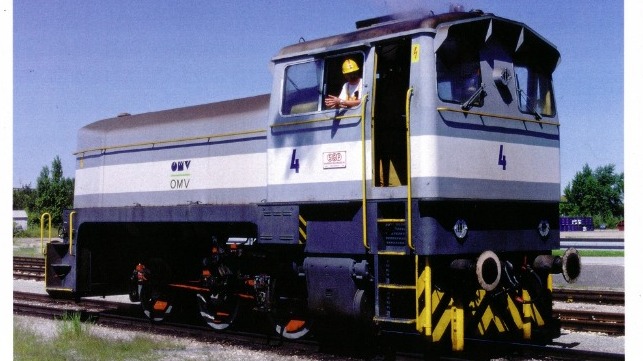Revisiting Thermal Energy Storage for Vessel Propulsion

Developments in the solar thermal power industry and more recently in the nuclear power industry involve thermal storage material capable of sufficiently high temperature to generate steam to drive turbines for several hours. There is scope to adapt some of this technology to ships that sail for comparatively short distances between ports located close to a thermal power station.
Introduction
Thermal energy storage formed the basis of propulsion for some 19th century short-distance submarines and fireless steam railway shunting locomotives built mainly during the early 20th century. Saturated water stored inside an insulated tank at high pressure at under 1,000 psia (6.9 Mpa) and high temperature just below 545 degrees F (285 degrees C) served as both the thermal storage material and the means by which to drive the piston engines. During operation and as the mass of water inside the tank decreased, so did its pressure and temperature. A thermal recharge was required.
Railways experimented with thermal storage material such as molten sodium hydroxide that melted at 318 degrees C. While some thermal storage materials required a massive input of thermal energy to transform from the solid to the liquid state, the material releases thermal energy very slowly. Advances in solar thermal energy technology include development of molten salt thermal storage material heated far above its melting point, using its heat capacity to rapidly release sufficient heat to generate sufficient steam that drive turbines connected to electric generators that supply the power grid for several hours after sunset.
Heat from Thermal Storage
The use of a bypass thermostat circuit involves flowing some of the liquid metal through a pipe that passes through thermal storage material while a portion of it flows through a parallel pipe that bypasses the material. Pipes of high-temperature and lower temperature liquid metal are combined upstream of the boiler, to maintain near constant temperature arriving at the boiler over a prolonged time period. The bypass circuit allows for constant level of power output from steam-driven power generation over an extended period of up to a few hours, with potential to adapt this approach to mobile operation.
While the original mobile thermal storage technology involved saturated water at between 230 degrees C and 285 degrees C, new generation molten salt thermal storage material stores heat at 350 degrees C to 500 degrees C, yielding much higher thermal efficiency with possible application for short-distance operation in tug boats and port area railway shunting locomotives.
Powering a Ship
A ship would require a high level of power to accelerate from stationary at quayside to achieving a cruising speed at considerable distance offshore. When the ship cruises offshore at low to moderate speed, it would require far less power to maintain that speed. Alternatively, a ship sailing stopping at several successive nearby ports or at a series of navigation locks would undergo multiple occasions of acceleration when it would require near maximum power for short time durations. The well proven heat-capacity thermal energy storage system would provide for the repeated acceleration requirements of a ship, without degradation.
The proven operational success of evening power generation involving heat capacity thermal storage material at solar thermal power stations provides the basis to adapt the technology for short-distance ship propulsion of up to several hundred nautical miles. The range of vehicles would include tug boats that propel barges along inland waterways, coastal ships and port area railway locomotives that are used for shunting services and short-distance movement of trains. While small vehicles would convert heat to propulsive power using thermo-acoustic converters, larger vehicles would operate using steam driving turbines and electrical power equipment.
Small Reactors
Research and development has been underway for several year involving very small nuclear reactors of under 15 Mwe output that would be suitable for operation at large seaports and at large airports. There are several locations internationally where a major seaport and a major (coastal) airport are located within very close proximity to each other, with the close proximity allowing for a small reactor to provide electrical power and thermal energy to both nearby terminals. Electric battery-powered ferry vessels have already entered commercial service while battery-powered airplanes carrying people have also been test flown.
A small reactor can provide the combination of heat and electric power, including recharging land-based thermal storage systems and battery-electric storage systems during the off-peak periods. There appears scope for the heat from a single micro-reactor to sustain the thermal energy requirements of a fleet of thermal-storage ships and also thermal-storage short-distance railway locomotives. The greatly extended service life expectancy of thermal energy storage technology enhances its economics over electric battery storage systems that incur higher capital cost while also offering far shorter useable service life expectancies. Economics enhances the attractiveness of thermal energy storage technology.
Solar Thermal Energy
The heat capacity thermal storage systems involving molten salt mixtures were developed as part of power plants that operate on concentrated solar thermal energy, mainly in arid regions. There are several locations internationally where a desert region extends to the coast, where solar thermal collection and storage may be developed near a seaport to provide electrical and thermal energy. Some of the stored thermal energy may be allocated for transportation vehicles that operate on such energy, including tugboats, coastal ships and short-distance railway locomotives. The Red Sea and the Persian Gulf represent suitable regions to operate thermal storage vehicles.
Conclusions
The solar thermal power industry has proven that a mixture of molten salt operating in heat capacity storage mode can produce steam to sustain the operation of steam turbines that generate electric power while operating at higher efficiency that thermal batteries using saturated water. The installation of small nuclear reactors at ports would sustain the operation of thermal battery powered ships, tugs and port area railway locomotives.
The opinions expressed herein are the author's and not necessarily those of The Maritime Executive.
